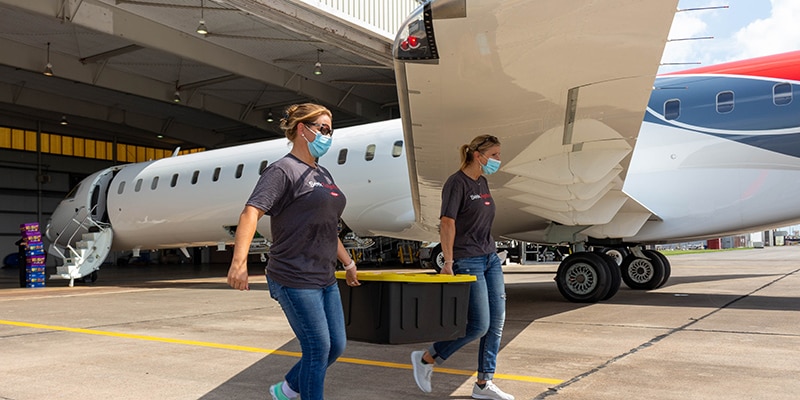What are dioxins and furans?
The term “dioxin” is commonly used to refer to a family of chemicals that share chemical structures and characteristics. These compounds include polychlorinated dibenzo dioxins (PCDDs) and polychlorinated dibenzo furans (PCDFs). Of the 210 dioxin and furan compounds, 17 are the focus of regulatory action. Read more
Where does dioxin come from?
Dioxin is a trace unintended by-product of industrial, residential and natural processes, usually involving combustion. Historically, incinerators, the manufacture of certain herbicides, and pulp and paper bleaching were among the largest industrial sources of dioxin. Dioxin is also produced by non-industrial sources, like forest fires, residential wood burning, backyard burning of household trash, oil heating, and emissions from diesel vehicles. According to the U.S. EPA, cigarette smoke also contains a small amount of dioxin. However, the U.S. Environmental Protection Agency (EPA)’s “An Inventory of Sources and Environmental Releases of Dioxin-Like Compounds in the United States for the Years 1987, 1995, and 2000” concludes that “environmental releases of dioxin-like compounds decreased by approximately 90 percent between 1987 and 2000.” The significant decline in dioxin emissions to the environment has occurred as a result of both U.S. EPA and industry efforts to control and eliminate sources of dioxin through improvements in technology.
Each of us has small amounts of dioxins and furans in our bodies. Based on recent studies, levels in our bodies and our food supply, where the majority of our dioxin exposure occurs, are going down significantly, too. Scientists are continuing to monitor to see if these trends continue. Because dioxin occurs naturally in the environment, and because technology allows us to measure increasingly lower levels of substances, the dioxins and furans in our bodies will never go to zero. Today, EPA considers "uncontrolled combustion," including open burning of household trash, agricultural burning and landfill fires, to be the largest unaddressed sources of dioxin in the environment,1 accounting for an estimated 57% of total releases.2 Increasingly, natural sources, such as forest fires, are also being recognized as significant contributors of dioxin to the environment.
It is also important to realize that many naturally occurring chemicals present in foods and produced by our bodies are capable of interacting with the same biological processes that dioxins affect. Much exciting research will take place in the future as science attempts to understand what these naturally occurring chemicals are and what role they have in normal biology and in disease
How much dioxin am I exposed to?
This question has received much scientific scrutiny. A large number of studies have been published on the amount of dioxin found in the environment, in food, and in our bodies. For example, a study by EPA stated that the majority of the exposure is derived from food:
Human exposure to dioxins is thought to come primarily from animal products such as meat, dairy products and fish. Other routes of exposure, such as inhalation, water ingestion, or soil related exposure are expected to be minimal (< 5%) for dioxins (Pinsky and Lorbr 1998).
The study by Pinsky and Lorber demonstrated that dioxin exposures began to increase around the 1950s and peaked in the late 1960s. More recent studies illustrate the decline in the amount of dioxins that can be detected in U.S. citizens (Aylward and Hays, 2002)4 as well as other countries (Ewers et al., 19965; Liem et al., 20006). One published estimate of dioxin exposures in terms of dioxin equivalents known as toxic equivalents (or TEQ), reported that dioxin exposures began to increase in the 1950s from 0.5 picograms/kilogram of body weight/day TEQ (pg/kg/day) to a high of 6 pg/kg/day TEQ. In the 1990s, the estimated dioxin equivalency exposure decreased to 0.5 pg/kg/day (Lorber, 2002)7. The most recent data from the U.S. Department of Agriculture (USDA) and Food and Drug Administration (FDA) suggest that background daily intakes of dioxins and furans, on a TEQ basis, are approximately 0.2 to 0.3 pg/kg/day. By comparison, the World Health Organization (WHO) has established a Tolerable Daily Intake (TDI) of 2.3 pg/kg/day. The TDI is an allowable daily intake based on the most sensitive of dioxin’s non-cancerous effects (male reproductive effects observed in rats). Currently, the EPA has proposed a reference dosage of 0.7 pg/kg/day as a safe dose based on the questionable male reproductive and thyroid effects reported among Seveso children. However, this reference dosage would implicate dietary exposure in some individuals in the U.S. population as unacceptable. The 0.7 pg/kg/day proposed reference dosage is undergoing review and debate by a Science Advisory Board.
How can I reduce my personal dioxin levels?
Most people are exposed to dioxin through the food they eat. We believe that background levels of dioxin in food do not compromise the safety of the food supply. For additional information, please see the web site prepared by the Interagency Working Group on Dioxin (IWG).
Have any Dow employees been exposed to dioxins and furans and what is the status of their health?
Dow has routinely monitored the health of our employees, and all results indicate that the levels of dioxin they may have been exposed to have not had any impact on their health, with the exception of chloracne, a temporary skin condition that can be severe in some cases.
The largest single-plant study of workers who were exposed to dioxin during manufacturing operations from the late 1930s to 1979 at the Dow site in Midland, Michigan involves the health of 2,192 employees in the U.S. Some of these chlorophenol workers may have had dioxin levels in the past that were 10,000 times greater than background levels today. After an outbreak of chloracne, the health of these employees has been followed for more than 60 years — longer than any other dioxin-exposed employee population in the world.
Researchers evaluated mortality (death) rates for several diseases including cancer, heart disease, and diabetes. Results show no indication of increased trends of disease related to dioxin exposure, with the exception of chloracne. Of those employees, 12 percent developed chloracne, but this group in particular showed low overall cancer rates compared to the U.S. population. The researchers examined 22 different cancers among workers exposed to trichlorophenol. The numbers of deaths from soft tissue sarcoma were slightly higher, but from lung cancers slightly lower, than what would be expected in the U.S. population.
The numbers of deaths from other cancers were consistent with U.S. population levels. Risk for 22 cancers was also examined in the pentachlorophenol workers and like the trichlorophenol workers most cancers were at expected levels. However, there was a slight elevation in non-Hodgkin’s lymphoma. In any study where so many cancers are examined, it is not unusual that some causes of death will be higher and some will be lower based on normal variability. The results show no trend between increasing dioxin exposure levels and increasing cancer levels for any of the cancers. Heart disease and diabetes risk were also at expected levels for both trichlorophenol and pentachlorophenol workers. The studies also show that Dow employees with dioxin exposure have lower mortality levels than the U.S. population.
This study group provides a particularly valuable assessment of potential risks related to dioxin because it has a long follow-up time (averaging 30 years per employee), and it is based on high quality industrial hygiene monitoring data and analysis of dioxin in the blood of a sample of the employees. The study shows that Dow employees who worked in plants where dioxin was potentially present have lower overall mortality rates than the general population. The studies also show that Dow employees with dioxin exposure are healthy relative to the general population.
Since the initial study, which was published in a peer-reviewed occupational medicine journal in 1980, Dow has published 47 more studies on potential human health effects of dioxin exposure. These studies included evaluations of reproductive outcomes such as miscarriages and birth defects; diabetes; and effects on other organs like the liver and kidneys. Dow also evaluated levels of dioxin in the blood in a subset of the study group and the report was published in 2005. This study validated previous estimates of exposure based on jobs held, and the number of years in them. Results of all studies demonstrate the same conclusion — that Dow employees who were exposed to high levels of dioxin in an industry setting generally do not have a higher risk of disease. The exception is chloracne, which occurred in employees who experienced very high exposure levels, with temporary effects.
What are the harmful effects of dioxin?
The scientific data that must be understood to answer this question present a bewildering collection of conflicting information that creates confusion, misperceptions, and potentially undue concern over the risks from dioxin exposure, especially for individuals currently exposed to background levels. Adding to the confusion is the wide range of methodologies used in these studies. Before this question can be answered, it is very important to distinguish between effects recorded in well-controlled laboratory studies in rodents such as rats and mice, and in clinical observations and human health studies of exposed people, including highly exposed workers and communities like Seveso, Italy that experienced industrial accidents.
We believe exposure to background levels of dioxin does not cause any human health effects. Many documents list the effects of dioxin without informing the reader whether they are from relatively high dose studies in mice and rats or if they are clearly demonstrated in highly exposed populations of workers and communities exposed through industrial accidents. Overall, evidence that low level, background exposure to dioxin causes adverse health effects is lacking. Even in poisoning circumstances or unique community exposures to dioxin where people have developed the tell-tale signs of dioxin’s effects in humans (chloracne), the evidence of other serious health effects including cancer is no different from the disease incidence in the control populations who have not been excessively exposed. Claims that background exposures cause health problems are mainly derived from regulatory policies based on mathematical modeling of risk and assumptions derived from studies in animals.
The human health data have only consistently demonstrated that relatively high exposures to dioxin in the workplace or from an industrial accident may cause chloracne — a temporary skin condition which can be severe in some cases. These types of exposures have produced levels of dioxin in the blood hundreds to thousands of times higher than the levels people currently have in their bodies.
Dow acknowledges that studies have demonstrated that dioxin (specifically, 2,3,7,8-TCDD) administered in high amounts to laboratory animals produces a variety of health effects in these animals.
The 16 dioxins and furans that are not 2,3,7,8-TCDDhave not been studied nearly as much as 2,3,7,8-TCDD. What is known, however, is that the other 16 dioxin compounds are either known to be, or appear to be, less toxic than 2,3,7,8-TCDD. Emerging data suggests that there may be significant differences in how these other 16 dioxins and furans compare to 2,3,7,8-TCDD with respect to toxicity potential.
In summary, there are a number of specific effects observed in laboratory animals, but the high amounts of dioxin administered in those studies do not resemble current or future human exposure, whether from occupational sources or the very low levels found in the environment. The relevance of these laboratory studies on laboratory animals to the relatively low exposures humans have today is a matter of significant debate. In general, little evidence has been found that definitively links the multitude of dioxin effects occurring in laboratory animals to humans, and the evidence that does exist is weak and inconsistent.





